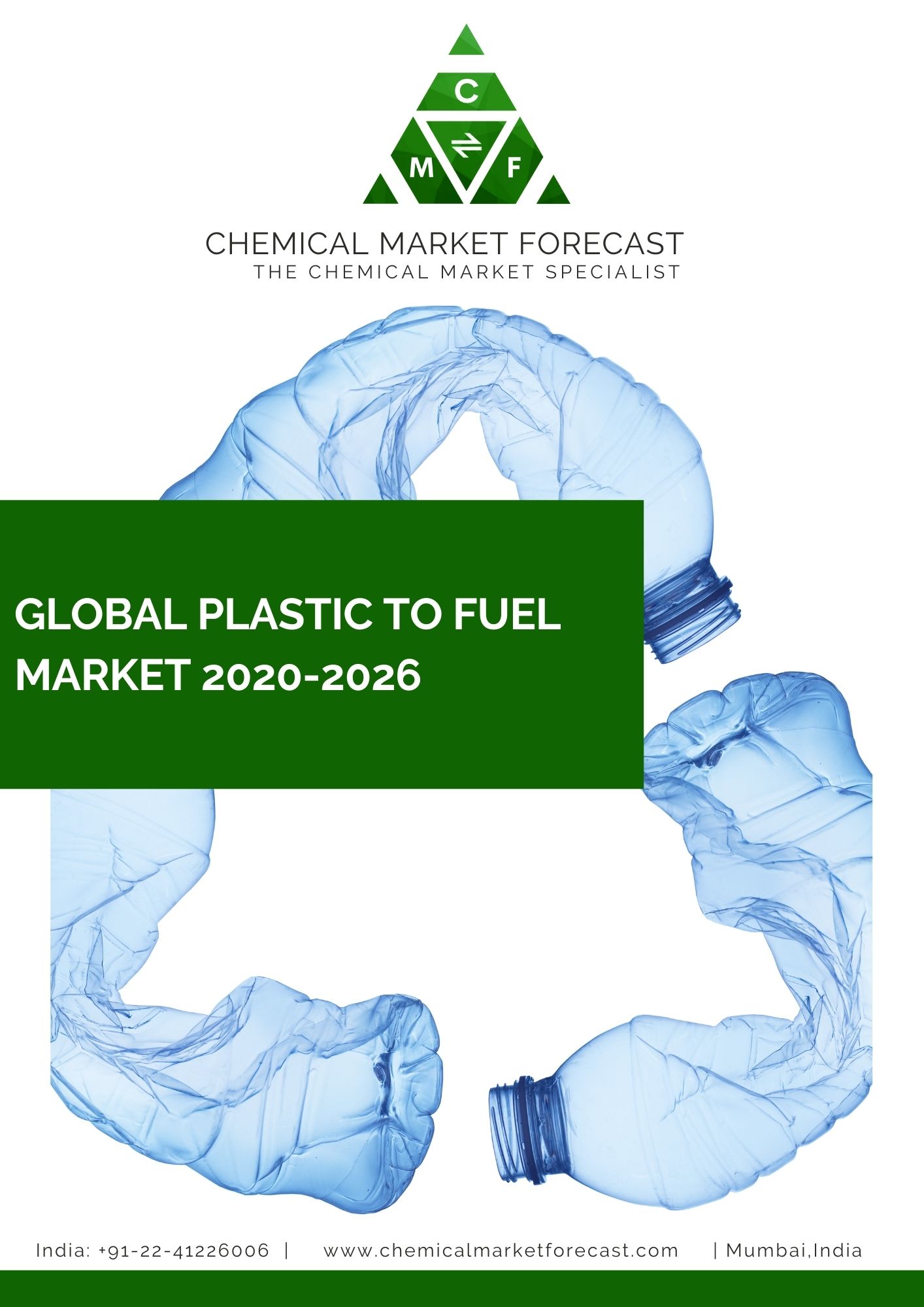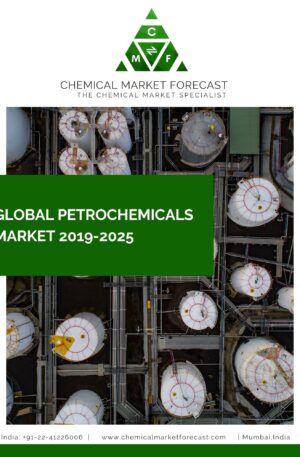Global Plastic to Fuel Market 2020-2026
Plastic to fuel is a novel technology that converts plastic waste into liquid fuels to deliver environmental benefits. The process involves the development of ultra-clean and ultra-low sulfur fuel from plastic waste. The plastic is shredded and heated in an oxygen-free chamber at a temperature of 400 degrees Celsius. The process is called pyrolysis. The food and beverage, petrochemical, cosmetics, automotive industry are some of the major end-user plastic of the Plastic-to-fuel industry.
The growing demand for clean energy from waste products for a clean environment has contributed to the growth of the plastic to fuel industry. An increase in household and industrial waste has acted as a catalyst to promote energy generation from these waste products. The regulations and stringent checks have led to a positive impact on the market. Growing environmental concerns about the use of non-renewable energy sources will hamper the market growth. There exists a high initial cost of setting up for a manufacturing plant. Plastic to fuel is not suitable for recycling approvals according to local and state governments. This factor hinders the growth of the plastic to fuel market.
The growing demand for petroleum products will offer lucrative growth opportunities to the plastic to fuel market. The increase in demand for cosmetic products will promote the growth of the cosmetic industry. This increment will provide a potential opportunity for the plastic to fuel market. The cosmetic industry uses petroleum products extensively in the production of cosmetic products. Hence it will augment the growth of plastic to fuel industry.
The plastic to fuel market is expected to grow at a CAGR of 2.57% during the forecast period from 2021 to 2026. The Plastic-to-fuel market was valued at approximately USD 587 million in 2020. The emerging stringent regulations and the need to reduce greenhouse emissions due to petrochemicals are promoting the growth of the Plastic-to-fuel market.
Europe’s plastic to fuel market accounts for a 45% share of the overall industry. This share is attributed to the existence of multiple plastics to fuel facilities, which offer high recycling and energy recovery rate from plastic wastes. Europe also aims to reduce its greenhouse gas emissions by 40% from the 1990 levels and will promote the growth of clean and renewable energy sectors.
SCOPE:
The study period of this report, “Global Plastic to Fuel Market.” ranges from 2020-2026, and the forecast period of this report is from 2021-2026.
• The report provides a thorough survey of the industry with its definition, applications, and manufacturing technology.
• The report covers the key drivers, restraints, and challenges that are expected to shape the Global Plastic to Fuel market in detail.
• The report studies the international industry stakeholders in detail.
• The report depicts the global market of Plastic to Fuel, which includes the production, value chains, supply, and demands, which is explained using statistical analysis.
• The total market is further divided by application, by source, by de-polymerization, by type and, by region, which is discussed in-depth for the competitive landscape analysis.
• The report estimates the 2021-2026 market development trends of the Global Plastic to Fuel market. It provides an analysis of upstream raw materials, downstream demand, and current market dynamics.
TABLE OF CONTENTS
Global Plastic to Fuel Market Report
1. Market Introduction of Global Plastic to Fuel Market
2. Market Segmentation of Plastic to Fuel Market
2.1 Global Plastic to Fuel Market Segmentation By Region
2.2 Global Plastic to Fuel Market Segmentation By Type
2.3 Global Plastic to Fuel Market Segmentation By Crop Type
3. Cost Structure Analysis of Plastic to Fuel Market
4. Country Analysis of Global Plastic to Fuel Market
4.1 China
4.1.1 Plastic to Fuel Market Size in China
4.1.2 Plastic to Fuel Market Analysis in China
4.1.3 Key Plastic to Fuel companies in China
4.1.4 Regulatory Framework of Plastic to Fuel Market in China
4.2 Germany
4.2.1 Plastic to Fuel Market Size in Germany
4.2.2 Plastic to Fuel Market Analysis in Germany
4.2.3 Key Plastic to Fuel companies in Germany
4.2.4 Regulatory Framework of Plastic to Fuel Market in Germany
4.3 France
4.3.1 Plastic to Fuel Market Size in France
4.3.2 Plastic to Fuel Market Analysis in France
4.3.3 Key Plastic to Fuel companies in France
4.3.4 Regulatory Framework of Plastic to Fuel Market in France
4.4 Italy
4.4.1 Plastic to Fuel Market Size in Italy
4.4.2 Plastic to Fuel Market Analysis in Italy
4.4.3 Key Plastic to Fuel companies in Italy
4.4.4 Regulatory Framework of Plastic to Fuel Market in Italy
4.5 Netherland
4.5.1 Plastic to Fuel Market Size in Netherland
4.5.2 Plastic to Fuel Market Analysis in Netherland
4.5.3 Key Plastic to Fuel companies in Netherland
4.5.4 Regulatory Framework of Plastic to Fuel Market in Netherland
4.6 Russia
4.6.1 Plastic to Fuel Market Size in Russia
4.6.2 Plastic to Fuel Market Analysis in Russia
4.6.3 Key Plastic to Fuel companies in Russia
4.6.4 Regulatory Framework of Plastic to Fuel Market in Russia
4.7 Canada
4.7.1 Plastic to Fuel Market Size in Canada
4.7.2 Plastic to Fuel Market Analysis in Canada
4.7.3 Key Plastic to Fuel companies in Canada
4.7.4 Regulatory Framework of Plastic to Fuel Market in Canada
4.8 Mexico
4.8.1 Plastic to Fuel Market Size in Mexico
4.8.2 Plastic to Fuel Market Analysis in Mexico
4.8.3 Key Plastic to Fuel companies in Mexico
4.8.4 Regulatory Framework of Plastic to Fuel Market in Mexico
4.9 Singapore
4.9.1 Plastic to Fuel Market Size in Singapore
4.9.2 Plastic to Fuel Market Analysis in Singapore
4.9.3 Key Plastic to Fuel companies in Singapore
4.9.4 Regulatory Framework of Plastic to Fuel Market in Singapore
4.10 United Kingdom
4.10.1 Plastic to Fuel Market Size in United Kingdom
4.10.2 Plastic to Fuel Market Analysis in United Kingdom
4.10.3 Key Plastic to Fuel companies in United Kingdom
4.10.4 Regulatory Framework of Plastic to Fuel Market in United Kingdom
4.11 Switzerland
4.11.1 Plastic to Fuel Market Size in Switzerland
4.11.2 Plastic to Fuel Market Analysis in Switzerland
4.11.3 Key Plastic to Fuel companies in Switzerland
4.11.4 Regulatory Framework of Plastic to Fuel Market in Switzerland
4.12 Brazil
4.12.1 Plastic to Fuel Market Size in Brazil
4.12.2 Plastic to Fuel Market Analysis in Brazil
4.12.3 Key Plastic to Fuel companies in Brazil
4.12.4 Regulatory Framework of Plastic to Fuel Market in Brazil
4.13 USA
4.13.1 Plastic to Fuel Market Size in US
4.13.2 Plastic to Fuel Market Analysis in US
4.13.3 Key Plastic to Fuel companies in US
4.13.4 Regulatory Framework of Plastic to Fuel Market in US
4.14 Japan
4.14.1 Plastic to Fuel Market Size in Japan
4.14.2 Plastic to Fuel Market Analysis in Japan
4.14.3 Key Plastic to Fuel companies in Japan
4.14.4 Regulatory Framework of Plastic to Fuel Market in Japan
4.15 South Korea
4.15.1 Plastic to Fuel Market Size in South Korea
4.15.2 Plastic to Fuel Market Analysis in South Korea
4.15.3 Key Plastic to Fuel companies in South Korea
4.15.4 Regulatory Framework of Plastic to Fuel Market in South Korea
4.16 India
4.16.1 Plastic to Fuel Market Size in India
4.16.2 Plastic to Fuel Market Analysis in India
4.16.3 Key Plastic to Fuel companies in India
4.16.4 Regulatory Framework of Plastic to Fuel Market in India
4.17 Thailand
4.17.1 Plastic to Fuel Market Size in Thailand
4.17.2 Plastic to Fuel Market Analysis in Thailand
4.17.3 Key Plastic to Fuel companies in Thailand
4.17.4 Regulatory Framework of Plastic to Fuel Market in Thailand
4.18 Russia
4.18.1 Plastic to Fuel Market Size in Russia
4.18.2 Plastic to Fuel Market Analysis in Russia
4.18.3 Key Plastic to Fuel companies in Russia
4.18.4 Regulatory Framework of Plastic to Fuel Market in Russia
4.19 Malaysia
4.19.1 Plastic to Fuel Market Size in Malaysia
4.19.2 Plastic to Fuel Market Analysis in Malaysia
4.19.3 Key Plastic to Fuel companies in Malaysia
4.19.4 Regulatory Framework of Plastic to Fuel Market in Malaysia
4.20 Saudi Arabia
4.20.1 Plastic to Fuel Market Size in Saudi Arabia
4.20.2 Plastic to Fuel Market Analysis in Saudi Arabia
4.20.3 Key Plastic to Fuel companies in Saudi Arabia
4.20.4 Regulatory Framework of Plastic to Fuel Market in Saudi Arabia
5. Global Plastic to Fuel Market Trends
5.1 Global Plastic to Fuel Market Trends- Key Drivers
5.2 Global Plastic to Fuel Market Trends- Key Restraints
5.3 Global Plastic to Fuel Market Trends- Key Challenges
5.4 Porter’s Five Forces Analysis of Plastic to Fuel Market
5.5 PEST Analysis- Plastic to Fuel Market
6. Global Plastic to Fuel Market Forecast
6.1 Global Plastic to Fuel Market Forecast By Region
6.1.1 North America
6.1.2 Europe
6.1.3 APAC
6.1.4 Middle East
6.1.5 ROW
6.2 Global Plastic to Fuel Market Forecast By Type
6.2.1 Fertilizer
6.2.2 Pesticide
6.3 Global Plastic to Fuel Market Forecast By Crop Type
6.3.1 Fruits & Vegetables
6.3.2 Oilseed and Pulses
6.3.3 Cereals & Grains
6.3.4 Other
7. Supply Chain Analysis of the Plastic to Fuel Market
8. Opportunity Analysis
9. Scenario Analysis
10. Key Company Profiles
11 Strategic Conclusions





